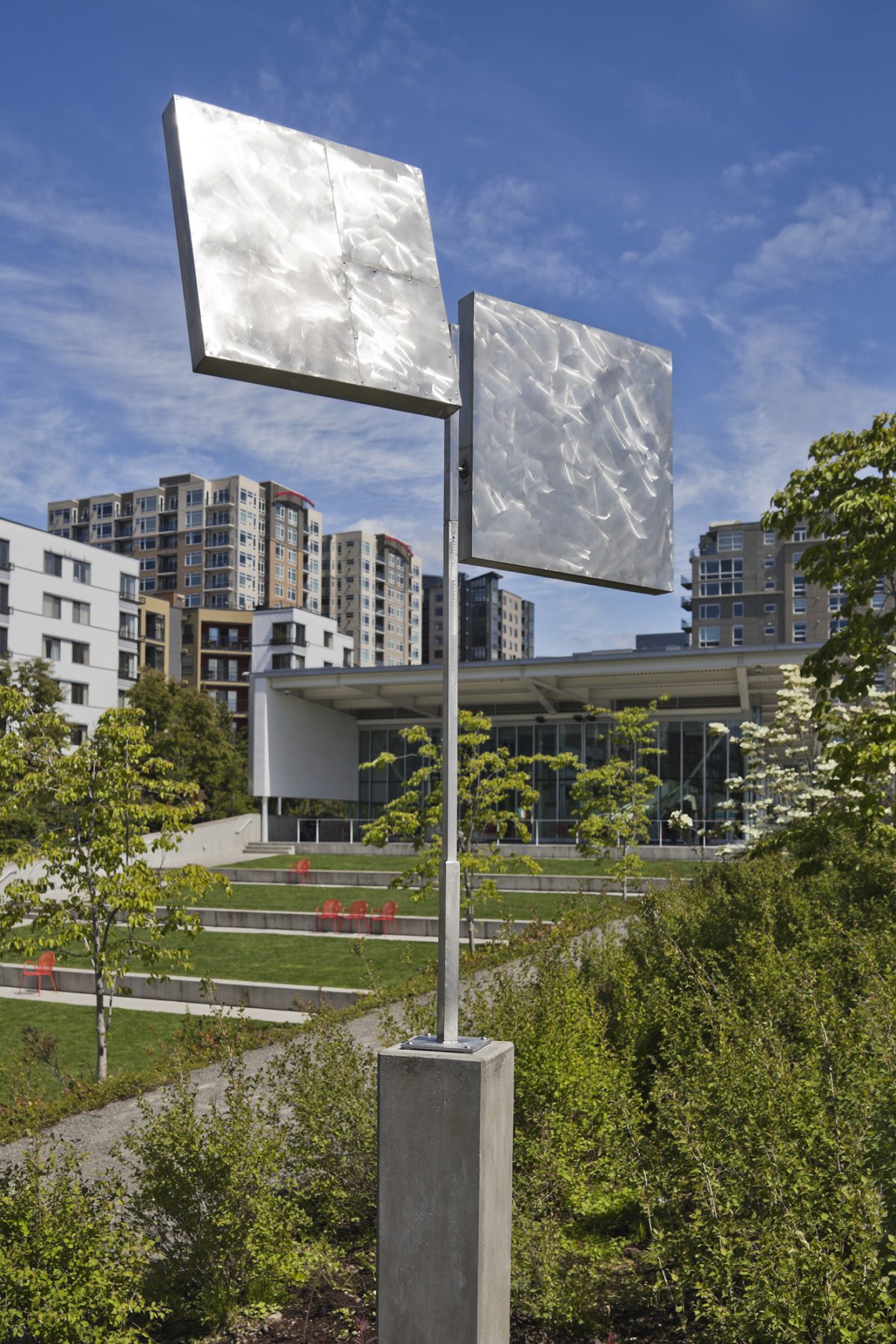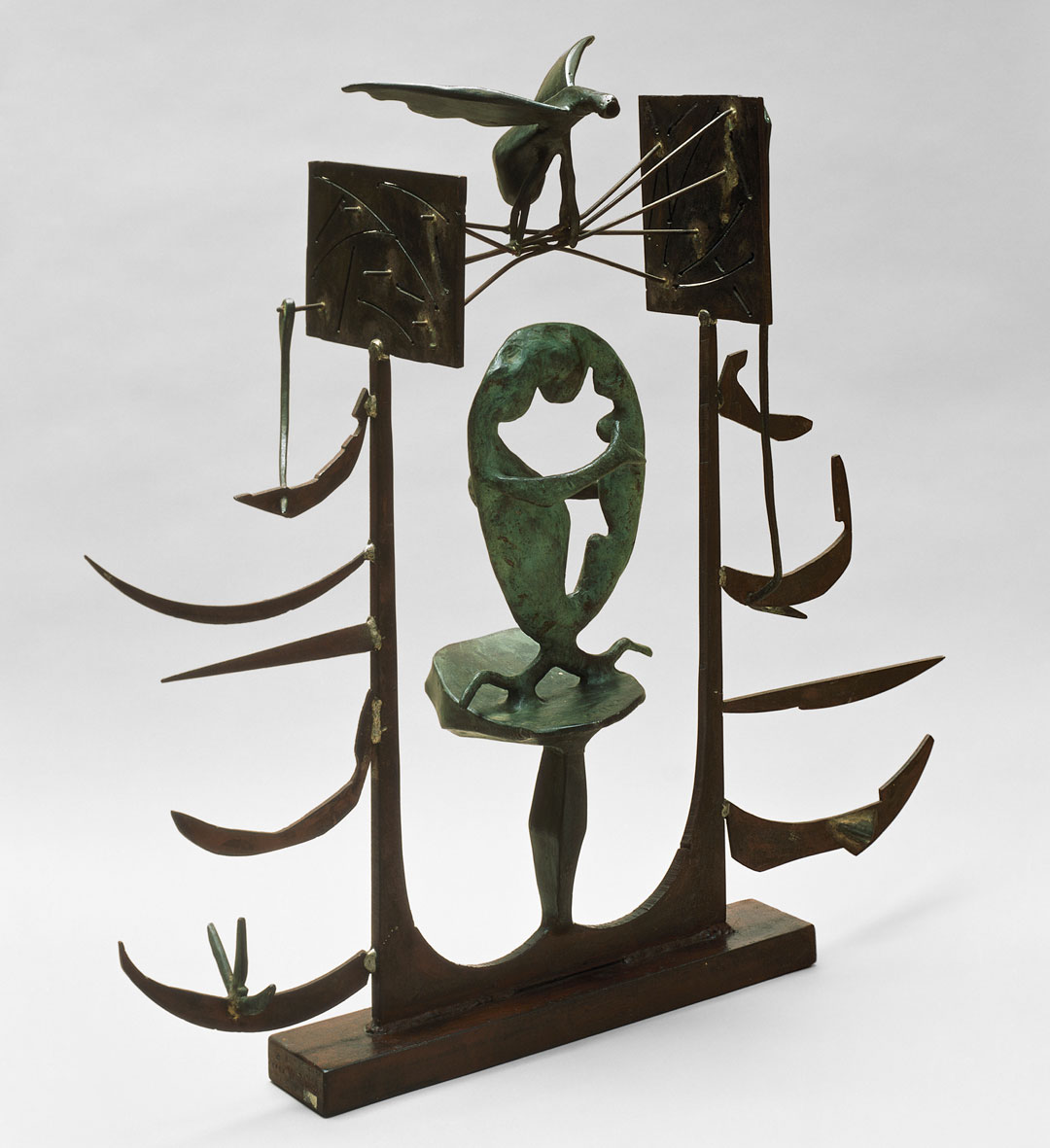Object of the Week: Two Plane Vertical Horizontal Variation III
As the wind picks up at the Olympic Sculpture Park, American artist George Rickey’s Two Plane Vertical Horizontal Variation III (1973) uses the natural elements to transform from a still sculpture to a mesmerizing experiment in movement, allowing us to consider how that movement can in turn create its own forms.
Rickey’s kinetic sculptures come from an amalgamation of life experiences and technical skills. He was born on June 6, 1907 in South Bend, Indiana; his father was an engineer, setting the stage for the technical foundation that would become a pertinent aspect of his future work. Rickey went on to temporarily reject engineering to study history and eventually art, becoming a history teacher and painter. During and after World War II, he was majorly influenced by the work of Alexander Calder, Naum Gabo, and David Smith among others.
During the 1970s, Rickey began using flat planes in his kinetic sculptures, burnishing the stainless steel planes in order to create luminosity. He rejected motorized mechanics; instead the planes are able to create motion through the combination of weight, design, and ball bearings inside of the bearing housing. The laws of physics and the unpredictability of the natural world are his tools of choice.
Two Plane Vertical Horizontal Variation III is inspected and treated annually by SAM’s conservation department to ensure that Rickey’s vision remains in motion at the sculpture park. In 2022, the sculpture was cleaned, examined for stability, spot treated to maintain an even and uncorroded exterior, and the access panels were opened up to inspect the stability of the rods and bearings. The sculptures at the Olympic Sculpture Park, including Rickey’s, require constant care to withstand weather, constant movement, and exposure to the Puget Sound’s salty water.
As a part of my Emerging Arts Leader Internship in conservation, I am working alongside SAM conservators to examine, record, and treat a number of SAM collection works, focusing specifically on the outdoor sculptures in the Olympic Sculpture Park. It is very special to have the opportunity to work directly with sculptures that I have spent years studying or admiring. I’m glad to have contributed directly to the preservation and future enjoyment of modern and contemporary public art.
– Rosa Sittig-Bell, SAM Emerging Arts Leader Intern
1 George Rickey Foundation, “Glossary of Technical Terms,” https://www.georgerickey.org/art/glossary-of-terms.
2 Hayden Herrera, “George Rickey,” in George Rickey in South Bend (South Bend: The Snite Museum of Art University of Notre Dame, 1985) 11–17.
3 Vero Beach Museum of Art, George Rickey Kinetic Sculpture: A Retrospective (Vero Beach: The University of Washington Press, 2007).
Image: Two Plane Vertical Horizontal Variation III, 1973, George Rickey, stainless steel, 97 x 68 x 68 in. Gift of Martin Z. Margulies, 2007.263 © Estate of George Rickey/Licensed by VAGA at Artists Rights Society (ARS), NY.

